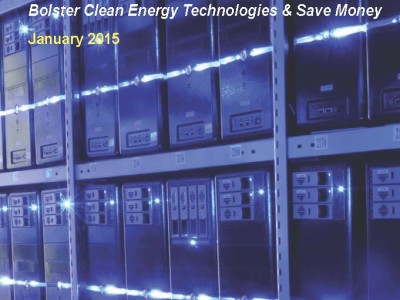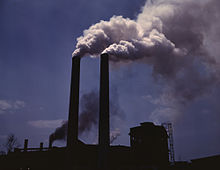Region: National
Climate Engineering: National Academy Committee recommends starting research (with limits)
An NAS report on controversial engineered responses to climate change gets all the big things right, but avoids the hardest questions
Earlier this week, the National Research Council Committee on Geoengineering Climate released two reports, “Climate Intervention: Carbon Dioxide Removal and Reliable Sequestration” and “Climate Intervention: Reflecting Sunlight to Cool Earth.” Requested and funded by several US federal departments – NASA, NOAA, DOE, and the cutely labeled “U.S. Intelligence Community” – this report is the first …
CONTINUE READINGCalifornia Supreme Court to Decide Whether the Mining Law Preempts State Ban on Suction Dredge Mining
Court’s Decision May Affect State’s Ability to Regulate Activities on Federal Lands
The California Supreme Court recently accepted a case that may make it more difficult for the state to protect the environment from the damaging impacts of mining. At issue is the state’s ban on suction-dredge mining in streambeds. Californians engaged in suction-dredge mining have vigorously fought against the state’s ban, and a panel of the …
CONTINUE READINGThe Dietary Supplement Scandal
There are 65,000 dietary supplements on the market, and almost half the population uses at least one of them. Americans spent $13 billion on dietary supplements last year, according to the Washington Post. There are disturbing indications that nearly all that money is wasted — or to put it more bluntly, that the industry is essentially …
Continue reading “The Dietary Supplement Scandal”
CONTINUE READINGTea Party Support for Cutting Greenhouse Gases?
Surprising New Poll Results
The NY Times reports some very interesting poll results regarding climate change. The poll shows that Americans are more likely to support a candidate who favors action on climate change, less likely to favor a candidate who takes the “I am not a scientist” line, and much less likely to favor one who calls climate …
Continue reading “Tea Party Support for Cutting Greenhouse Gases?”
CONTINUE READINGRenowned Scholar Jim Salzman to Join UCLA Law, UCSB Bren School Faculties
I am thrilled to share the news that Jim Salzman is moving west to join the faculties of the Bren School at UC Santa Barbara and UCLA School of Law. Jim is currently the Samuel Mordecai Professor at Duke Law School and Nicholas Institute Professor at Duke’s School of the Environment but is moving this summer to become …
Continue reading “Renowned Scholar Jim Salzman to Join UCLA Law, UCSB Bren School Faculties”
CONTINUE READINGSolar Tariff Wars Heat Up
States that have helped boost rooftop solar installations through so-called net metering policies are beginning to scale back their subsidies under pressure from utilities. As ClimateWire reported today (here’s the link but it’s behind a paid subscription wall), Hawaii’s largest utility has just proposed rolling back the state’s net metering policy, joining Arizona, California, …
Continue reading “Solar Tariff Wars Heat Up”
CONTINUE READINGFood: Too Much and Too Little
Actual malnutrition among American children (weight more than two standard deviations below normal) is rare in the U.S. Most of the estimates that I found range around 1%. Still, there are roughly 45 million children under 12 in the U.S., so 1% amounts to almost half a million children. Malnutrition seems considerably more common among …
Continue reading “Food: Too Much and Too Little”
CONTINUE READINGExpanding Access To Energy Information To Boost The Clean Technology Sector
Joint UC Berkeley / UCLA Law Report Released Today
California is poised for a major energy transformation in the coming decades, with Governor Brown pledging to put the state on a path to 50% renewables and 50% less petroleum usage by 2030. Achieving this transformation will require a robust and thriving clean technology sector, including renewable energy and energy storage developers, energy efficiency contractors, …
Continue reading “Expanding Access To Energy Information To Boost The Clean Technology Sector”
CONTINUE READINGDon’t Know Much ‘Bout Climatology
Why should we believe the scientists about climate change? Nobody — not even any individual scientist — understand all the details of the IPCC’s recent 1552 page “summary” of climate science. So why buy into the idea that tiny amounts of gases from beneficial energy production can cause devastating global harm? Part of the reason …
Continue reading “Don’t Know Much ‘Bout Climatology”
CONTINUE READINGKiller Coal
Black lung has been the underlying or contributing cause of death for more than 75,000 coal miners since 1968, according to NIOSH, the federal agency responsible for conducting research on work-related diseases and injuries. Since 1970, the Department of Labor has paid over $44 billion in benefits to miners totally disabled by respiratory diseases (or …
Continue reading “Killer Coal”
CONTINUE READING










